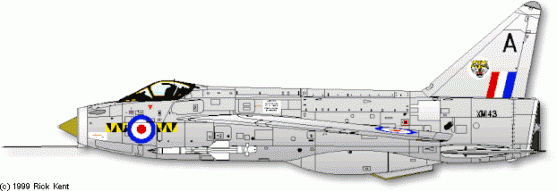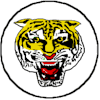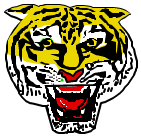by Rick Kent
This page is a continuation of Camouflage and Markings of No. 74 Sqn RAF, Part 1. It covers post-war history and aircraft of this famous RAF unit.
The Jet Age
74 Squadron was re-equipped as the RAF’s third Meteor squadron in June 1945 at Colerne in Wiltshire and formed the first all jet fighter wing along with 616 and 504 Squadrons. As you can see the camouflage and markings are nearly the same as the wartime ones – Ocean Grey/Dark Green upper surfaces, Medium Sea Grey undersurfaces, 18 inch Sky fuselage band, and six inch leading edge to the outer wing panels. Obviously there was no Sky spinner on a jet! The two differences from wartime Fighter Command practice were the addition of underwing serial numbers and the reintroduction of the narrow white stripe in the upper wing roundels.
The Mk.III Meteors were retained until March 1948, re-equipment with F.4’s commencing in December 1947.
The F.4 Meteor was operated by the Squadron from December 1947 to October 1950. This shows the period when Fighter Command aircraft reverted to all silver finish, which lasted from the late 1940’s to c.1954 – a relatively short time. At first, as with this aircraft, the wartime style of roundels and fin flash were retained, only being replaced with the post-war style divided into three equal lots of one third in the much brighter shades of red and blue around 1949/50. Code letters were still retained at this time, the pre-war style of coloured markings only gradually reappearing at different times on different squadrons during the early 50’s; indeed 74 Squadron continued with code letters for a time even when they first got the Mk.8 Meteors in October 1950.
The major differences between the Mk.3 and Mk.4 Meteors were, of course, the much larger engine nacelles and the clipped wings of the 4. 74 spent all of their time with Mk.4’s at Horsham St. Faith, where they had moved to in August 1946 with the Mk.3’s (they spent a brief period at Lubeck, Germany, in July/August 1947).
This Meteor 8 shows the return of the Tiger stripe markings on 74 Squadron’s a/c. When first received in October 1950 code letters were still in use as they had been on the F.4’s, and the 8’s were also ’silver’ all over, the correct official name for the colour was High Speed Silver which was actually a 50/50 mixture of aluminium and clear (transparent) cellulose dope paints. Post-war RAF silver aircraft were all painted with this finish and not in natural metal with the one exception of the Lightning. The best way I found to reproduce this finish on models is to airbrush firstly with aluminium paint and then with a coat of gloss varnish over the top. Anyway to get back to the Meteor 8’s, the Tiger markings were introduced while the a/c were still in the silver colour, with black individual letters on the fins. These aircraft had the earlier type of cockpit canopy with the metal rear end. As I mentioned before, camouflage was reintroduced on the upper surfaces from around 1954, consisting of Dark Green and Dark Sea Grey; the undersurfaces remained in silver.
The profile shows a later style of all clear cockpit canopy, and the full set of under wing and under fuselage fuel drop-tanks, with their prominent safety and trestle markings and stripes on them.
In March 1957 74 Squadron was re-equipped with the beautiful Hunter Mk.4. As you can see, the basic camouflage is the same as for the Meteor 8. In fact the only change to the colours was the movement of the Squadron marking to the nose (something which was done by many Hunter units) with the Tiger’s Head badge in the centre.
The only other things worthy of mention for modellers are to note the various whip aerials (on top of the wings, two side-by-side on top of the fuselage, and one below the nose); and also the gun gas ejector chutes above the cartridge link collectors (Sabrinas) on the nose. There was a problem with the very early Hunters in that these gases used to collect inside the nose when the guns were fired, and on one occasion the front of the nose actually exploded and blew off on a test flight; the pilot was fortunately able to make it back to base and land safely. Incidentally for anyone who does not know it, the link collectors were universally nicknamed Sabrinas in the RAF because at that time there was a well-known TV blonde bombshell called Sabrina who had a very large bust measurement!
74’s re-equipment with Hunter F.6’s started in November 1957, though the F.4’s remained until January 1958; even so the 4’s only lasted for somewhat less than a year. The colour scheme remains the same on the F.6. I have drawn one with the four drop tanks that this mark could carry (the Mk.4 could only carry the two inboard ones).
Modellers should also note that some Hunter drop tanks had fins while others did not. Note that this a/c has the blast deflector plates on the gun muzzles and also the whip aerials are painted yellow to prevent accidents. The Mk.6 also has the more powerful Avon engine with enlarged jet pipe of course, and also the saw-tooth wing leading edge.
74 Squadron moved to Coltishall on 8 June 1959, preparatory for it’s re-equipment with the Lightning in June 1960.

English Electric Lightning F.1
74 Squadron, Royal Air Force
Coltishall, Norfolk, September 1960
Pilot: Sqn Ldr John F.G. Howe
 74 Sqn became the RAF’s first Mach 2 fighter squadron in June 1960 when it received Lightning F.1’s at Coltishall. It was to be the only front-line unit to operate the Mk.1, which it did until April 1964. I have drawn the colour scheme as they first appeared, namely just plain natural metal overall with tiger stripe on the nose and badge on the white disc on the fin. This one also has the Squadron Commander’s pennant below the cockpit screen, together with his name and that of the Crew Chief (hence ’C.T.’ Rye for Chief Tech.). The Squadron was designated as the official RAF aerobatic team The Tigers to replace the all blue Hunters of 92 Sqn The Blue Diamonds.
74 Sqn became the RAF’s first Mach 2 fighter squadron in June 1960 when it received Lightning F.1’s at Coltishall. It was to be the only front-line unit to operate the Mk.1, which it did until April 1964. I have drawn the colour scheme as they first appeared, namely just plain natural metal overall with tiger stripe on the nose and badge on the white disc on the fin. This one also has the Squadron Commander’s pennant below the cockpit screen, together with his name and that of the Crew Chief (hence ’C.T.’ Rye for Chief Tech.). The Squadron was designated as the official RAF aerobatic team The Tigers to replace the all blue Hunters of 92 Sqn The Blue Diamonds.
The markings soon became more colourful: firstly the entire fins and rudders were painted black (retaining the badge on the white disc); and this black painting was soon extended to cover the whole spine up to the cockpit canopy – as can be seen on the F.3 version immediately below.
Squadron Leader Howe was a South African, the first of his nationality to command 74 since the famous ”Sailor” Malan way back in 1940-41 on Spitfires.
 Here’s the F.3 Lightning I mentioned. 74 Squadron re-equipped with this mark in April 1964, having moved to Leuchars in Scotland (near to St Andrews and its famous golf course for those interested in these things) on 2 March 1964. The Squadron continued with the same colour scheme as finally used on the Mk.1’s, only slightly altered to fit the shape of the different fin. Also some of the various warning and stencil markings were different. This style of very colourful markings on the fins and fuselage spines was popular on the Lightning squadrons at this time for only a few years before Fighter Command banned them all. This ban, however, only applied to those based in the UK so, as you will see from the next profile of the Mk.6, 74 Squadron were able to get away with reinstating their black fins on the later Mk.6’s after they moved to Singapore in June 1967.
Here’s the F.3 Lightning I mentioned. 74 Squadron re-equipped with this mark in April 1964, having moved to Leuchars in Scotland (near to St Andrews and its famous golf course for those interested in these things) on 2 March 1964. The Squadron continued with the same colour scheme as finally used on the Mk.1’s, only slightly altered to fit the shape of the different fin. Also some of the various warning and stencil markings were different. This style of very colourful markings on the fins and fuselage spines was popular on the Lightning squadrons at this time for only a few years before Fighter Command banned them all. This ban, however, only applied to those based in the UK so, as you will see from the next profile of the Mk.6, 74 Squadron were able to get away with reinstating their black fins on the later Mk.6’s after they moved to Singapore in June 1967.
The F.3 remained with the Squadron until January 1967, re-equipment with the 6’s commencing in November 1966.
 Here’s the F.6 Lightning, with the black fin. As stated above, the Squadron received these originally at Leuchars from November 1966 and Moved to Tengah in June 1967. Their last task with the Lightnings was to fly them to Akrotiri in Cyprus to replace the F.3’s of 56 Squadron, 74 Squadron being disbanded at the same time, August 1971. Note that only the fins were black on the 6’s and the fin flash is back to the original style; also the white disc with tiger head is a bit smaller than on the previous F.3’s.
Here’s the F.6 Lightning, with the black fin. As stated above, the Squadron received these originally at Leuchars from November 1966 and Moved to Tengah in June 1967. Their last task with the Lightnings was to fly them to Akrotiri in Cyprus to replace the F.3’s of 56 Squadron, 74 Squadron being disbanded at the same time, August 1971. Note that only the fins were black on the 6’s and the fin flash is back to the original style; also the white disc with tiger head is a bit smaller than on the previous F.3’s.
74 Squadron was not reformed again until October 1984, when it received the ex-US Navy/Marines F-4J’s that were purchased for the RAF for UK air defence to replace the Phantoms of 23 Squadron that had been sent to the Falkland Islands after the war with Argentina.
74 Squadron was reformed with the 2nd-hand ex-USN/USMC Phantom F-4J(UK) in October 1984. At first all but the Squadron Commander’s aircraft had just grey fins but fairly soon they all acquired black ones as shown. As you can see the Tiger Head appears both on the fin and the nose.
As regards the camouflage colours, these aircraft were slightly different in shades of grey from normal RAF colours since they were repainted as part of their refurbishment in the USA, using the nearest equivalent FS595a shades. So, the undersurfaces were FS 36440; upper surfaces of fuselage and outer wing panels Flint Grey FS 36314; and upper surfaces of inner wing panels FS 36270. A few of the F-4J’s were repainted shortly before retirement with the normal RAF greys but not many. In service the American paints tended to change colour quite a lot, one which I saw about 1989 having gone a very greenish shade!
In early 1991 74 gave up the F-4J and shared Phantom FGR.2’s with 56 Squadron, its sister Squadron at Wattisham, but this only lasted until 1st October 1992 when 74 became a Reserve Squadron flying Hawks with 4 Flying Training School.

Hawker Siddeley Hawk T.1
74 (Reserve) Squadron, 4 Flying Training School, Royal Air Force
Valley, Anglesey, October 1992
 This is the last of the 74 Squadron a/c. On 1st October 1992 74 became 74 (Reserve) Squadron of 4 Flying Training School. This particular Hawk T.1 was painted specially for display purposes. It was actually repainted like this in September before 74 officially reformed. The Squadron still flies its Hawks from Valley, and all black has, of course, since become the official colouring of all RAF training aircraft. However this one pre-dates that era and hence the roundels are not outlined in white; also the Squadron markings on this particular one only were much more profuse and larger than the usual, in particular the huge Tiger on the fin and the number 74.
This is the last of the 74 Squadron a/c. On 1st October 1992 74 became 74 (Reserve) Squadron of 4 Flying Training School. This particular Hawk T.1 was painted specially for display purposes. It was actually repainted like this in September before 74 officially reformed. The Squadron still flies its Hawks from Valley, and all black has, of course, since become the official colouring of all RAF training aircraft. However this one pre-dates that era and hence the roundels are not outlined in white; also the Squadron markings on this particular one only were much more profuse and larger than the usual, in particular the huge Tiger on the fin and the number 74.
So that’s it for the history in profile form of Tiger Squadron RAF. I hope you enjoyed it…
Rick Kent is a modeller, IPMS:er and a productive aviation artist. His speciality are computer-generated aircraft profiles.
This article was originally published in IPMS Stockholm Magazine in November 1999.









